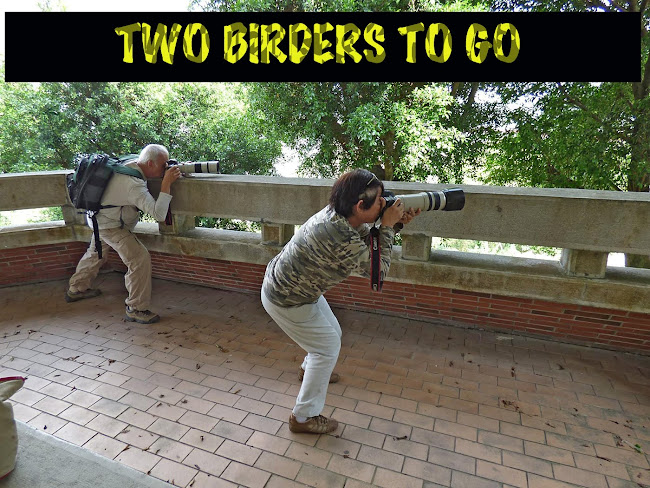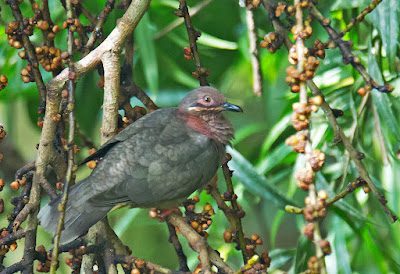Prior to these heartbreaking experience, I had missed a couple of opportunities of photographing lifers. As we entered the Infanta area, I saw a Rufous Hornbill soaring over the valley. I asked Peter, who was driving, to stop. He did. However as soon as we parked by the roadside, the said hornbill was seen no more. Further up the road, I saw another soaring bird. I yelled "raptor!" Even before Peter could stop, the Rufous-bellied Eagle was seen no more. Was it a coincidence that both species had the word "rufous" in their names?
At the area by the brook where the Cream-bellied and Yellow-breasted Fruit Doves had been seen recently, we met fellow bird photographers Cesar Espiritu, Mhark Gee, and Mags Ico who were stalking the said birds. We stayed with them for a while but both doves never showed up the whole time we were there. Mhark told us that a Rufous Paradise Flycatcher showed up earlier. Since then it was seen no more. Another, rufous=seen no more incident. Hmm.
So we moved on as we promised to take Peter to the Fire-breasted Flowerpecker site so that he could get his lifer.
Thankfully he did, and I got the constantly moving Sulphur-billed Nuthatch. Again.
Cynthia got a photo of a tailorbird. However it was too far and backlit for me to be able to identify it properly. My best guess would be Mountain (we were, after all, on a mountain).
Having gotten his lifer, we proceed to the area that Mags told us the White-fronted Tit can be found. We lingered there until about noon and were rewarded with three kinds of flowerpeckers: Buzzing, Orange-bellied and Pygmy. No Tits though.
 |
| Buzzing Flowerpecker |
 |
| Orange-bellied Flowerpecker |
 |
| Pygmy Flowerpecker |

























































